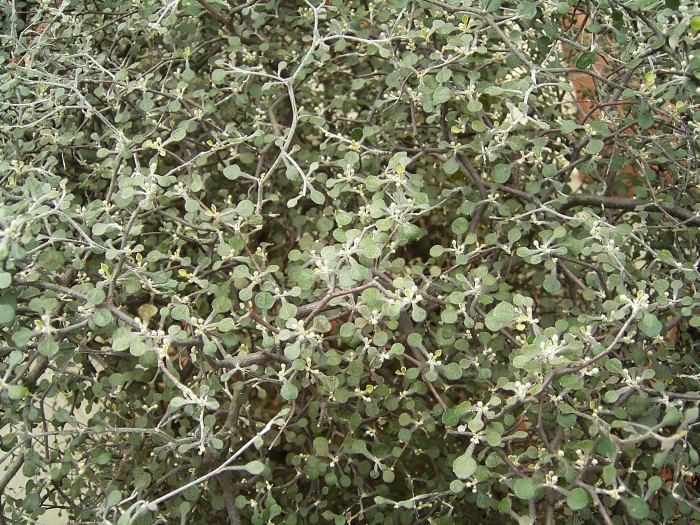Wire-Netting Bush
(Corokia cotoneaster)
Wire-Netting Bush (Corokia cotoneaster)
/
/

Frank Vincentz
CC BY-SA 3.0
Image By:
Frank Vincentz
Recorded By:
Copyright:
CC BY-SA 3.0
Copyright Notice:
Photo by: Frank Vincentz | License Type: CC BY-SA 3.0 | License URL: http://creativecommons.org/licenses/by-sa/3.0/ | Uploader: Ies | Publisher: Wikimedia Commons | Title: Corokia_cotoneaster_02_ies.jpg | Notes: |
























































Estimated Native Range
Summary
Corokia cotoneaster, commonly known as Wire-Netting Bush, is an evergreen shrub native to a range of habitats in New Zealand, including coastal areas, lowland forests, and subalpine scrublands. It typically grows to about 3 meters in height and is characterized by its highly branched, divaricating habit with rough, dark-colored bark. The shrub produces star-shaped, yellow flowers during its main flowering season from December to January, and its red fruits are particularly notable for their ornamental value.
Wire-Netting Bush is appreciated for its durability and versatility in landscaping. It serves as an effective wind barrier and can maintain a compact shape even in the strongest winds. Regular pruning enhances its appearance and promotes a dense, compact form, making it ideal for shaping or hedging. The dense, small leaves ensure that hedges remain tight and compact, and the foliage displays a beautiful color throughout the year. The variation in berry color, ranging from red to orange and yellow, adds to its ornamental appeal. In cultivation, Corokia cotoneaster thrives in full sun to part shade, requires moderate watering, and prefers soils with medium drainage. It is relatively low-maintenance and can be used in urban planting, border planting, or as a ground cover. However, gardeners should be aware that it can suffer from root rot if overwatered or planted in poorly drained soils.CC BY-SA 4.0
Wire-Netting Bush is appreciated for its durability and versatility in landscaping. It serves as an effective wind barrier and can maintain a compact shape even in the strongest winds. Regular pruning enhances its appearance and promotes a dense, compact form, making it ideal for shaping or hedging. The dense, small leaves ensure that hedges remain tight and compact, and the foliage displays a beautiful color throughout the year. The variation in berry color, ranging from red to orange and yellow, adds to its ornamental appeal. In cultivation, Corokia cotoneaster thrives in full sun to part shade, requires moderate watering, and prefers soils with medium drainage. It is relatively low-maintenance and can be used in urban planting, border planting, or as a ground cover. However, gardeners should be aware that it can suffer from root rot if overwatered or planted in poorly drained soils.CC BY-SA 4.0
Plant Description
- Plant Type: Shrub
- Height: 4-8 feet
- Width: 4-8 feet
- Growth Rate: Slow
- Flower Color: Yellow
- Flowering Season: Spring
- Leaf Retention: Evergreen
Growth Requirements
- Sun: Full Sun, Part Shade
- Water: Medium
- Drainage: Medium
Common Uses
Border Plant, Deer Resistant, Hedges, Low Maintenance, Salt Tolerant, Showy Flowers, Street Planting
Natural Habitat
Native to coastal areas, lowland forests, and subalpine scrublands in New Zealand
Other Names
Common Names: Korokio , Korokia-Tarango
Scientific Names: Corokia cotoneaster
GBIF Accepted Name: Corokia cotoneaster Raoul